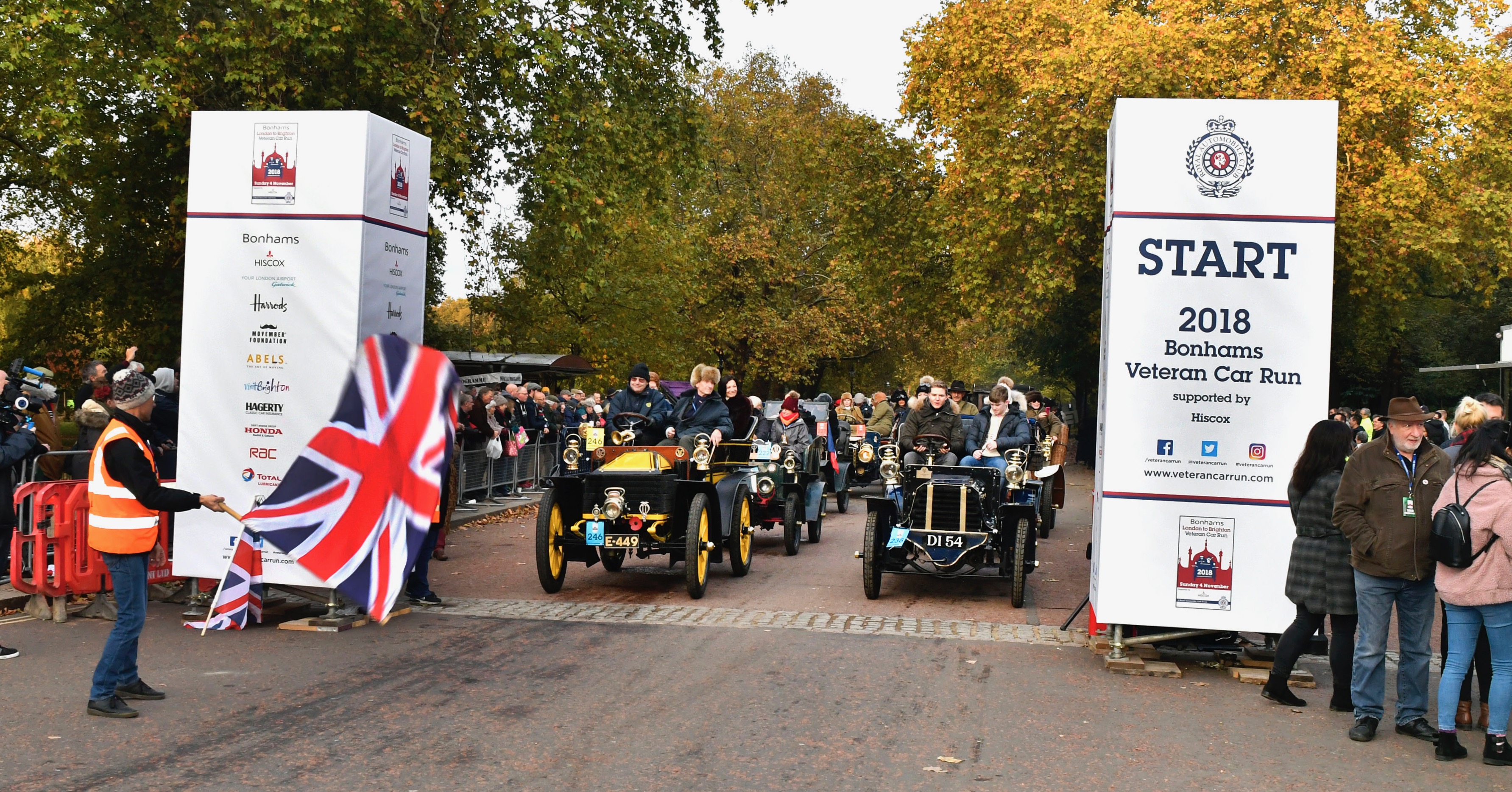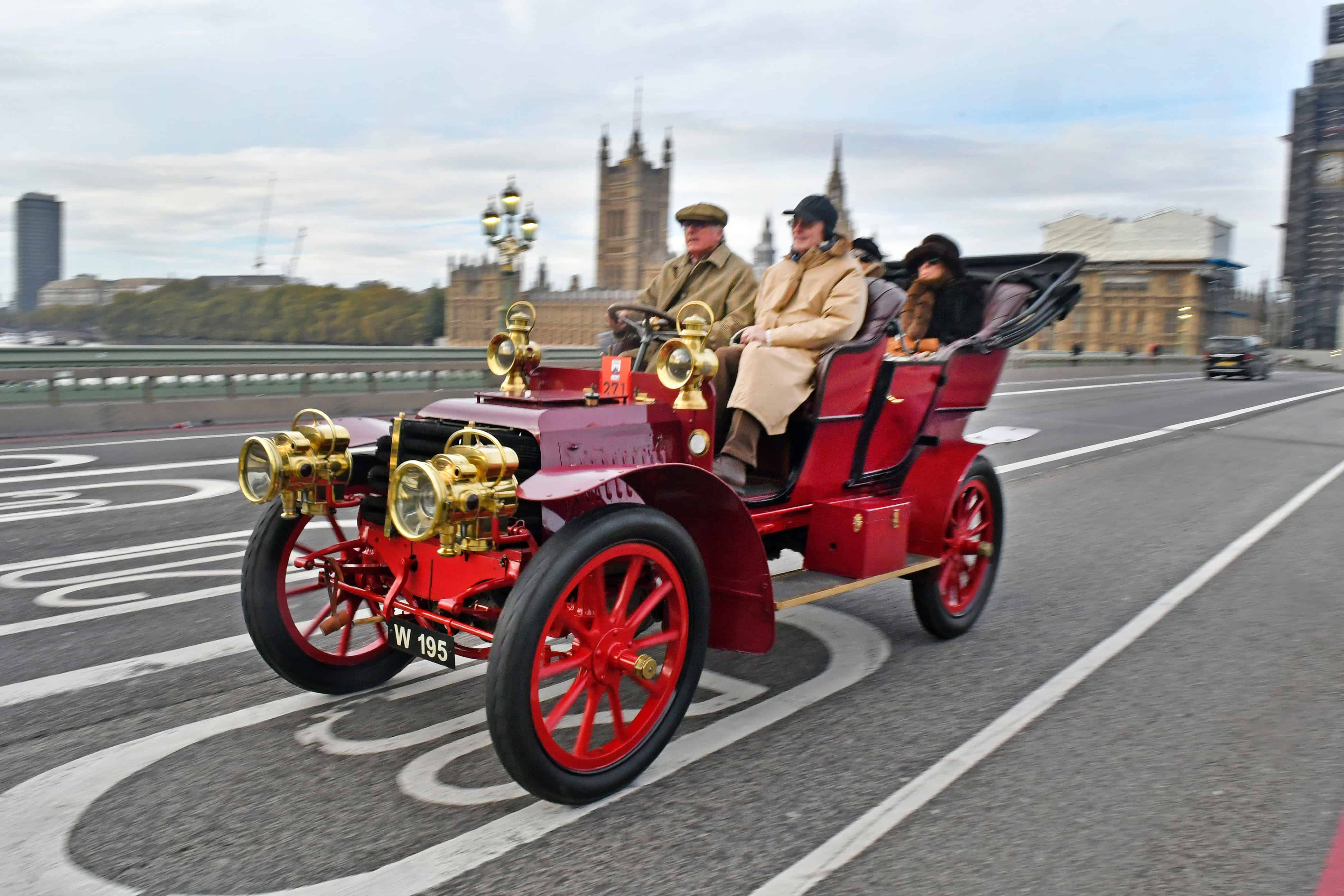“Nothing happens unless first a dream” – Carl Sanburg
When British engineers developed the steam carriage in 1861, a law restricted such vehicles to travel at a maximum speed of 4 mph on country roads, and two 2 mph within towns. It also required them to be preceded by a man walking and waving a red flag of warning to others on the road.
The Red Flag Act remained in effect until 1896 when the act was repealed. In celebration, an “Emancipation Run” from London to Brighton (about 60 miles) was coordinated by the Motor Car Club on November 14, 1896.
The new British law, the Locomotives on Highway Act, increased the speed limit on highways to 14 mph and abolished the requirement for the a man on foot with a red flag.
The first car to reach the Sussex seafront during that first “emancipation run” was was a 3-horsepower Leon Bollee tricycle, driven by its creator. The car needed 3 hours, 44 minutes, 35 seconds to make the trip from London — which means it averaged 13.91 mph.

To celebrate that day, the Royal Automobile Club organized the London to Brighton Veteran Car Run nearly nine decades ago, taking a break only during the years of World War II.
Whether rain, sleet, wind or sun (which we luckily had this year), the Run always starts on the first Sunday in November at the traditional 6:59 a.m. sunrise time in London’s Hyde Park near The Queen Elizabeth Gate and the Natural History Museum,
This year, for the first time, the route featured a split to ease traffic. The entry list of more than 430 cars built before January 1, 1905 — including those powered by steam, electricity and petroleum — pulled out of Hyde Park and on through Wellington Arch, down Constitution Hill past Buckingham Palace and Admiralty Arch and into Parliament Square.
At this point, the route send half the field on separate routes between Westminster and Croydon.
Half the stout-hearted group motored over Westminster Bridge and followed the regular A23 route via Kennington, Brixton and Streatham Common while the other half “clanked” their way via Millbank, over Lambeth Bridge continuing via Vauxhall, Clapham Common and Tooting.
The two routes merge on A236 near Croydon as the entire cavalcade headed to a pit stop in Crawley, where thousands spectators had a wonderful opportunity to get up close and personal with cars and drivers while also giving drivers and navigators the chance to have a hot drink.
The Bonhams London to Brighton Veteran Car Run supported by Hiscox Insurance accommodated 117 different marques coming from Argentina, Australia, Hong Kong, South Africa, Great Britain, as well as 21 from the United States.
The final leg of this challenging Run reveals that nearly 90 per cent of the starters made it to Brighton on Madeira Drive before the 4:30 p.m. and thus earned the much-desired finisher’s medal.

Awards included The Harrods Heritage Award for restoration to the 1903 Vabis from Sweden, Best Period Dress to Christopher Atkinson driving a 1903 De Dion Bouton, Regularity Time Trial (achieving an average speed as close as possible to the nominated target) honored Paul Kelling driving a 1904 Oldsmobile and Best International Entry (judge’s favorite car of the day) went to Robert McMeown, who shipped his 1902 and 1903 Packards from the U.S. to England by Air Cargo.
The official charity partner is the Movember Foundation that is dedicated to tackle men’s health issues around the world.






Thankyou for this wonderful collection of photos and comment regarding the London to Brighton.
I need this, as inspiration to finish my Veteran project so I can participate in these wonderful old vehicles.
" Just Wonderful " …… Michael Paas
This is truiy an interesting article. Wow! Who would imagine that there was a Red Flag Rule and a speed limit of 2-4 mph. The cars look fantastic!